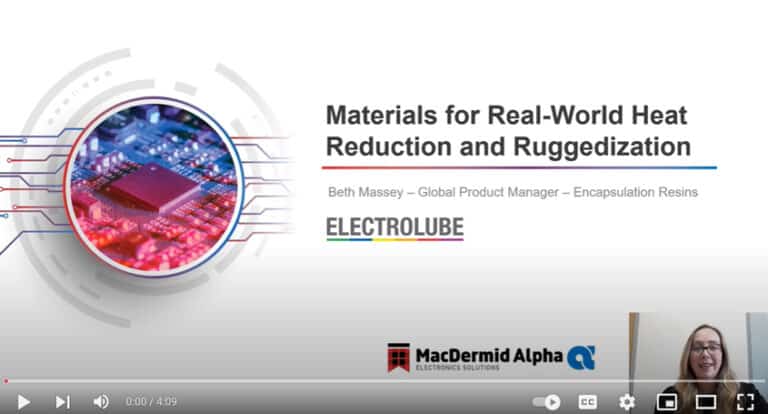Thermal management for LED lighting manufacturers
Moving on from my overview of common thermal ‘problems and solutions’ published in last month’s column, I’d like to focus more closely this month on a specific application area for thermal management solutions – and it’s a ‘hot’ one, too: LED luminaires and their associated electronics. The LED lighting industry is a global growth phenomenon and the sector’s demand for effective, high-quality electro-chemicals is enormous.
While LEDs have been present in many electronic devices for a number of years, more recent developments have led to their use in all types of domestic, commercial and automotive lighting, signage and domestic appliance products. In offering alternatives to halogen, incandescent and fluorescent lighting systems for both interior and exterior applications, the growth of the LED lighting market alone is expected to grow into a $70 billion industry by 2020; a growth from 18% market share to 70% market share in just over 5 years.
We are currently serving the LED industry in every aspect of product design and product protection, including areas such as potting, encapsulation, and conformal coating. For the purposes of this article, however, I’m going to concentrate on the thermal management of LED assemblies, and how materials selection and application can influence the life expectancy and long term performance of LED lighting systems.
As in my first column on this subject, I’m going to return to my original ‘frequently asked questions’ format, based on the many queries that our customer support teams field every day on the telephone, at exhibitions and when visiting customers’ premises. I’ve selected five common enquiries about LEDs followed by their respective responses, and I hope they offer useful guidance for SMT magazine readers with interests in this exciting field.
Does excess heat have an adverse effect on the LED and if so, how can thermal management materials mitigate this?
Heat adversely affects an LED by reducing both its efficiency and its life expectancy. By reducing the junction temperature by just a few degrees, the lifetime of an LED can be increased by thousands of hours. Moreover, a reduction in the temperature of the LED’s surrounding environment will also impact on the junction temperature and, again, the useful life of the LED.
Thermal management materials are designed to dissipate heat away from critical areas. In LED arrays, they can help distribute the heat, which reduces the temperature at LED junctions. Thermal management materials can either be used beneath LEDs as an interface between the PCB and the outer casing (also sometimes acting as a heat sink), or they can be used to encapsulate up to the LED surface, spreading the heat both above and below the PCB surface. Which method is ultimately chosen will be dependent upon the design of the assembly. Thermal management materials can also be used to encapsulate associated electronic circuits such as LED drivers, again reducing operating temperatures and improving the efficiency of the LED unit as a whole.
What different types and varieties of thermal interface materials are available, and how do I select the most appropriate one for my LED application?
There are many ways to improve upon the thermal management of LEDs. Products range from thermally conductive encapsulation resins, offering both heat dissipation and environmental protection, to thermal interface materials used to improve the efficiency of heat conduction at the LED junction. Such compounds are designed to fill the gap between the device and the heat sink and thus reduce the thermal resistance at the boundary between the two.
The design of an LED array will also dictate an appropriate choice of thermal interface material. For example, if it is a large array, across which temperature fluctuations are likely, it may be beneficial to use a material that is not subject to movement during thermal cycling. A Surface Curing Thermal Paste or one of the latest Phase Change Materials would be ideal choices for these larger LED assemblies.
Other applications may require less localised heat dissipation and therefore a resin that covers the whole surface of the PCB may be more efficient at spreading the heat. An encapsulated PCB is also protected from adverse environmental influences such as mechanical shock or high humidity. And let’s not forget thermally conductive bonding materials; for some applications, you might want both adhesive strength and thermal management, in which case a thermally conductive room temperature vulcanizing material (RTV) would be the appropriate choice.
If I am seeking to dissipate heat away from other power components such as LED drivers, what would be an effective solution?
Encapsulation resins every time! These provide high levels of protection against adverse environmental factors as well as total heat dissipation; they also provide structural stability and flame retardancy.
Does the operating environment impact upon my choice of thermal interface material and what are the key considerations?
Temperature changes, as mentioned before, can be a key factor. Temperature fluctuations can cause the thermal interface material to move, which is clearly undesirable. The gap or distance between LED/PCB and the heat sink also needs to be considered. If it is too large, a non-curing thermal interface material introduced between the LED and its heat sink is more prone to movement.
LED lighting assemblies are in use just about everywhere these days and it is important to consider the ability of the thermal interface material to withstand the conditions under which it operates. For example, high ambient temperatures, poor or damaged waterproofing, condensation, high humidity and so on will all have an impact on its performance. As with any protective compound, you need to understand the operating environment and discuss with chemical suppliers to identify the most suitable materials for your application.
How important is ease of processing with my choice of thermal management material?
The design of your LED lighting unit will determine the type of thermal management material you choose, ensuring that it is correctly applied to the critical areas of the assembly. Processing requirements depend on production capabilities, volumes of manufacture and the prevailing conditions during application. For example, a thermal interface material should be applied in an even film, in as thin a layer as possible.
If it is not possible to apply a thin layer, it might be better to use a pre-cut thermal pad, for example. This will, however, be thicker than a thermal paste or phase change material, which will result in higher thermal resistance. So, in common with all engineering problem-solving exercises, a compromise must be achieved; in this case, between your processing requirements and your expectations of performance in the end application.
Electrolube has a large portfolio of thermal management products but as I hope I’ve made clear in the foregoing, choosing an appropriate solution for your LED application is not exactly straightforward. Companies like Electrolube have invested extensively in this area and, as always, I strongly recommend you get some expert advice before you settle on any particular material or processing method. I hope readers have found my third column in this series useful; look out for more thermal management tips in my next blog.










